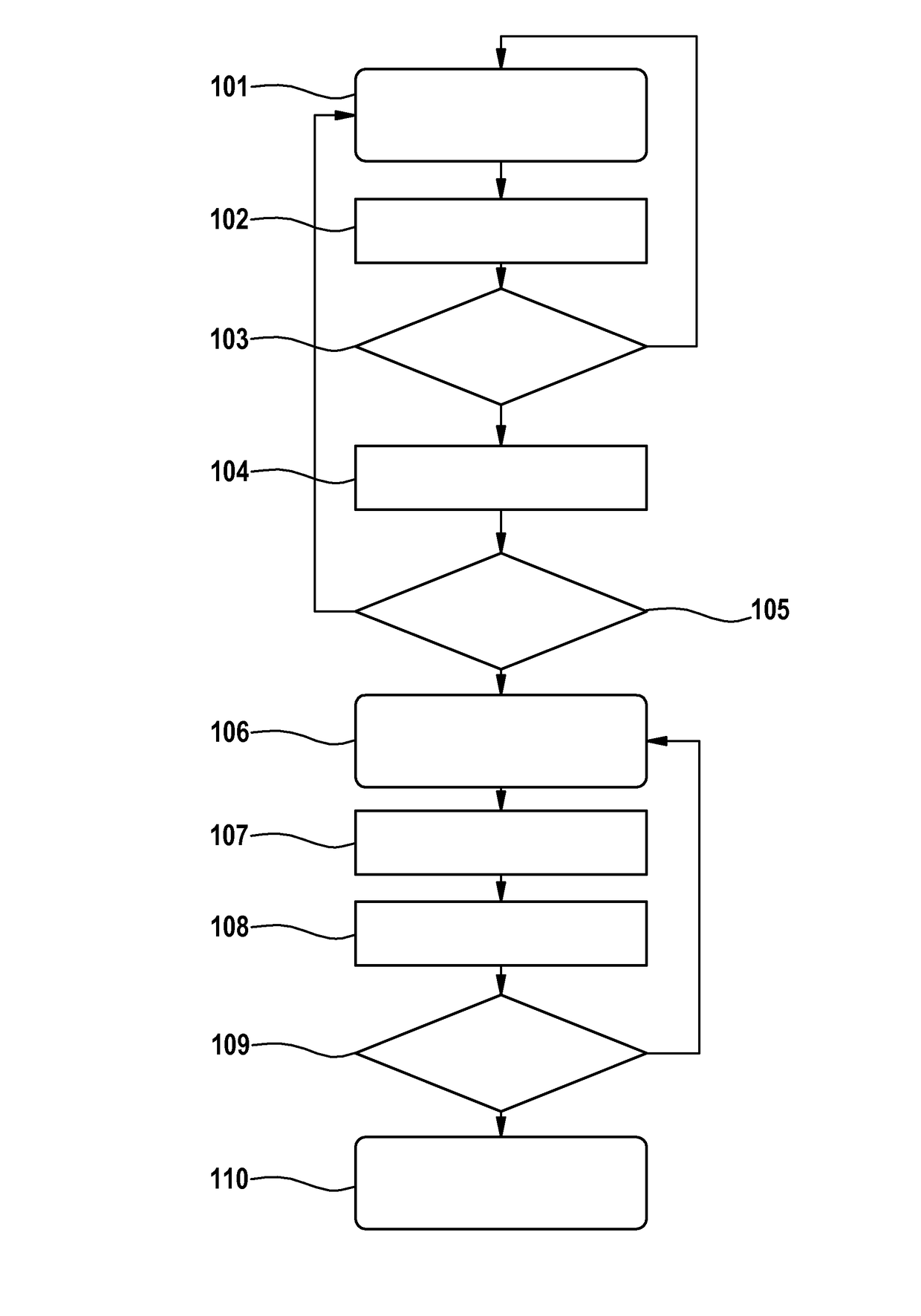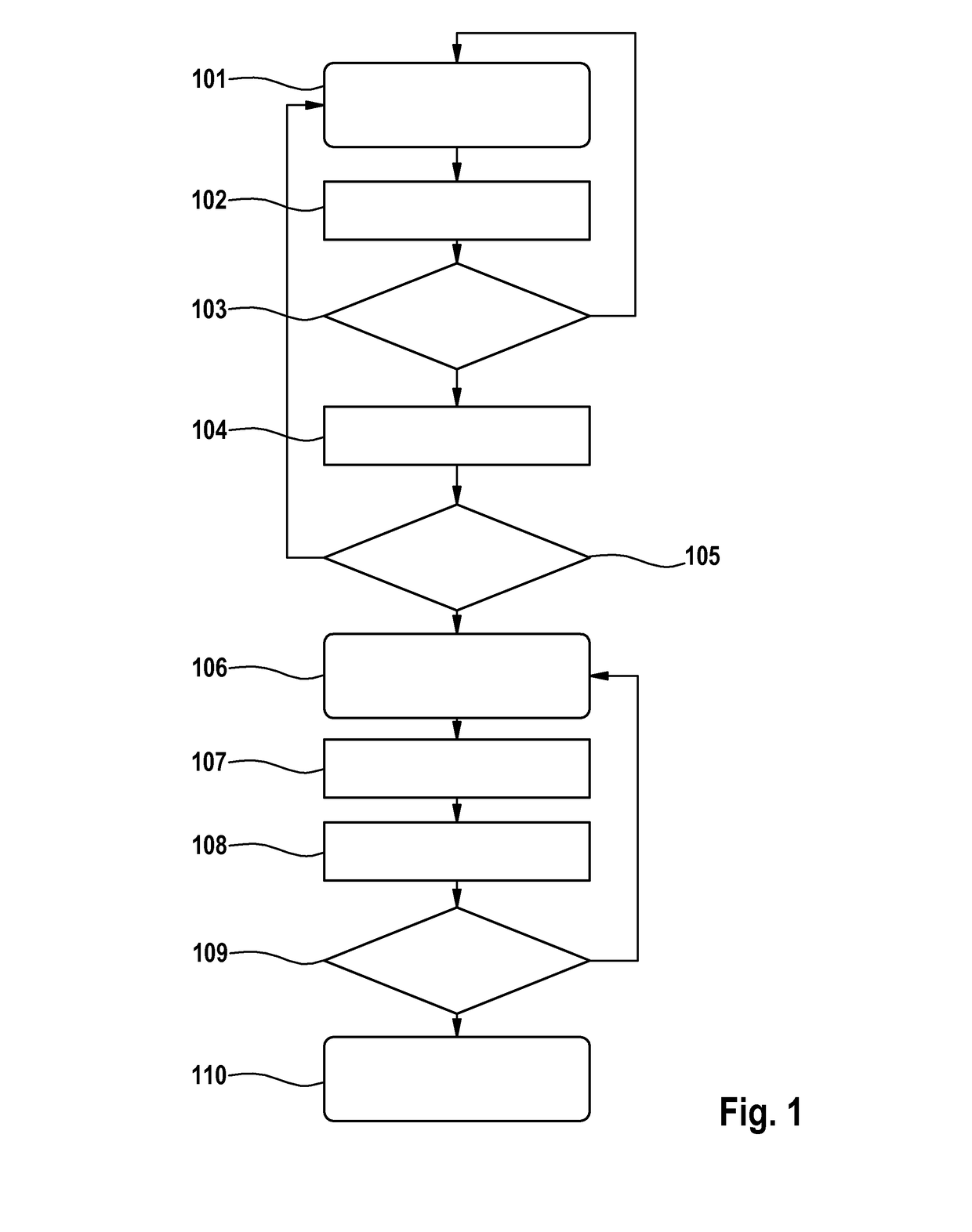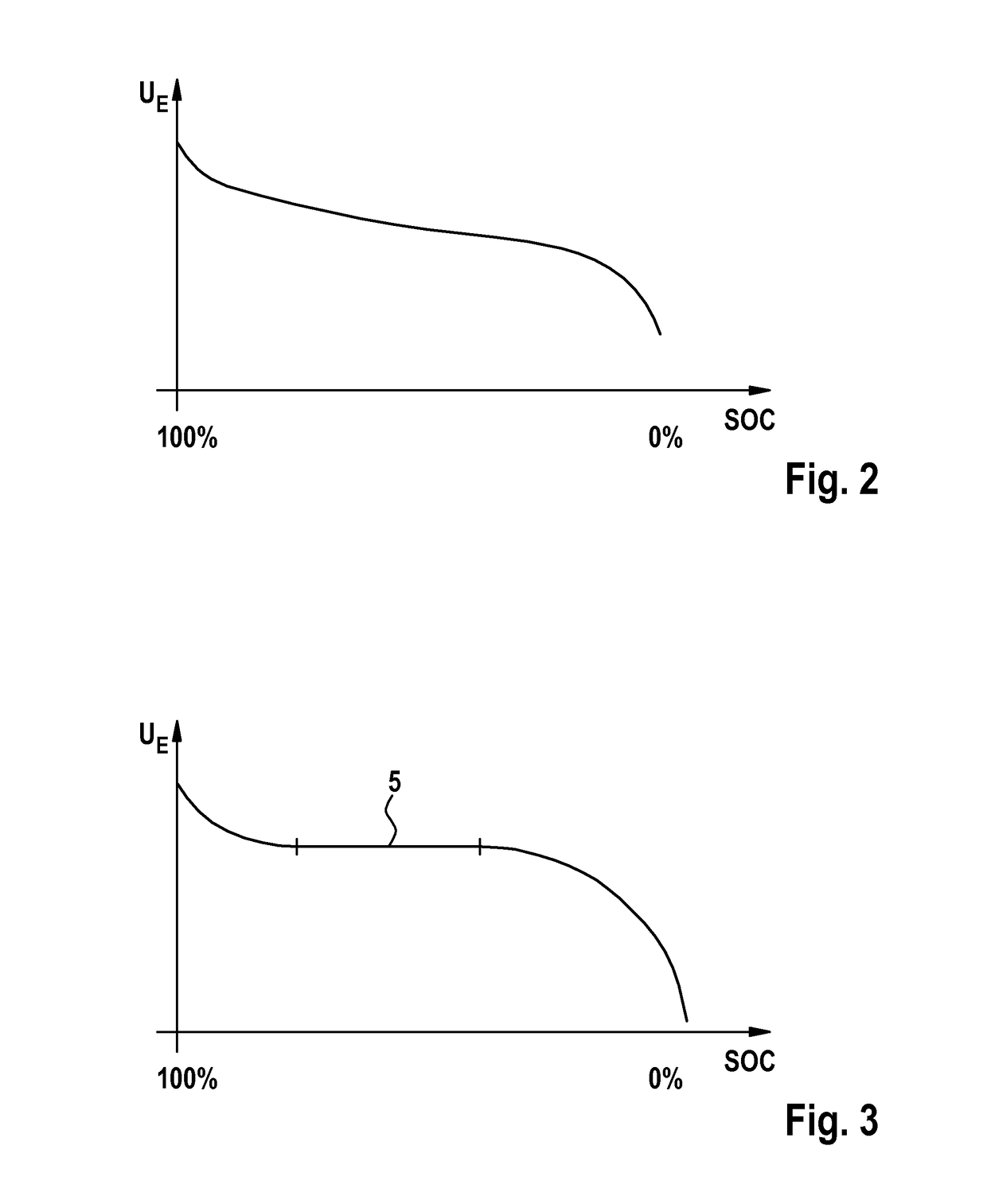Method for operating intrinsically safe battery cells
a battery cell and safe technology, applied in secondary cell servicing/maintenance, instruments, electrochemical generators, etc., can solve the problems of battery cell plating and breakdown risk at low temperatures, and achieve efficient service, efficient monitoring, and cell efficiency and operation safety.
- Summary
- Abstract
- Description
- Claims
- Application Information
AI Technical Summary
Benefits of technology
Problems solved by technology
Method used
Image
Examples
Embodiment Construction
[0035]FIG. 1 shows an exemplary embodiment of the method in the form of a flow diagram. In a normal operating mode, which is characterized in FIG. 1 by step 101, an intrinsically safe battery cell 1, which is described below in detail in relation to FIG. 7, is charged in step 102. In step 103, a check is made whether the intrinsically safe battery cell 1 was charged at a low temperature. If the intrinsically safe battery cell has been charged, for example, at room temperature a typical discharging process, which is not shown here, takes place and the method is continued at step 101 so that the intrinsically safe battery cell 1 continues to be operated in the normal operating mode and is recharged in a following cycle in step 102. If, however, the intrinsically safe battery cell 1 has been charged at a low temperature, i.e. at 0° C. or below, the discharge curve is determined during the succeeding discharging process and is analyzed in step 105 in regard to the presence of plating cr...
PUM
| Property | Measurement | Unit |
|---|---|---|
| temperature | aaaaa | aaaaa |
| temperature | aaaaa | aaaaa |
| discharge voltage | aaaaa | aaaaa |
Abstract
Description
Claims
Application Information
 Login to view more
Login to view more - R&D Engineer
- R&D Manager
- IP Professional
- Industry Leading Data Capabilities
- Powerful AI technology
- Patent DNA Extraction
Browse by: Latest US Patents, China's latest patents, Technical Efficacy Thesaurus, Application Domain, Technology Topic.
© 2024 PatSnap. All rights reserved.Legal|Privacy policy|Modern Slavery Act Transparency Statement|Sitemap



